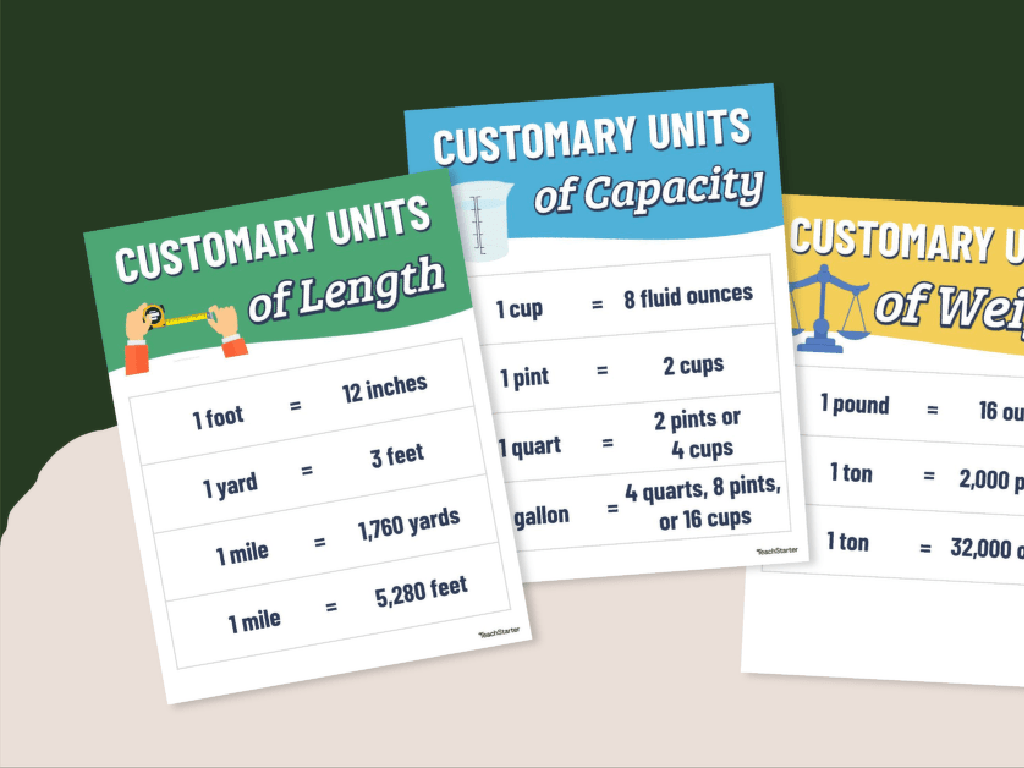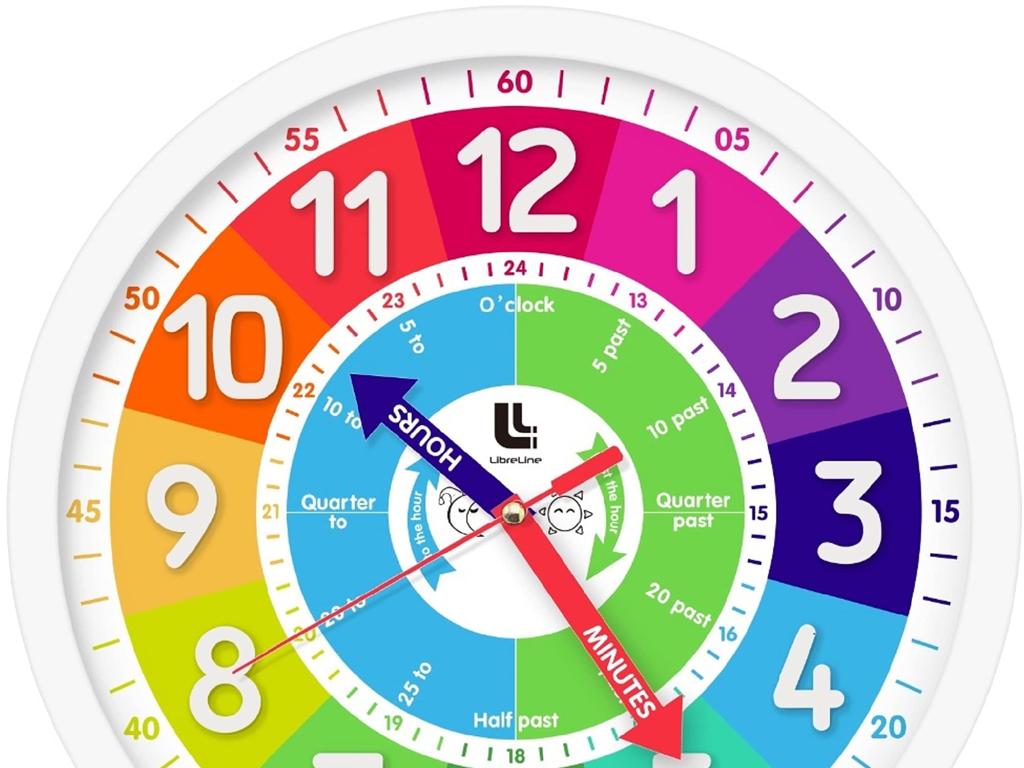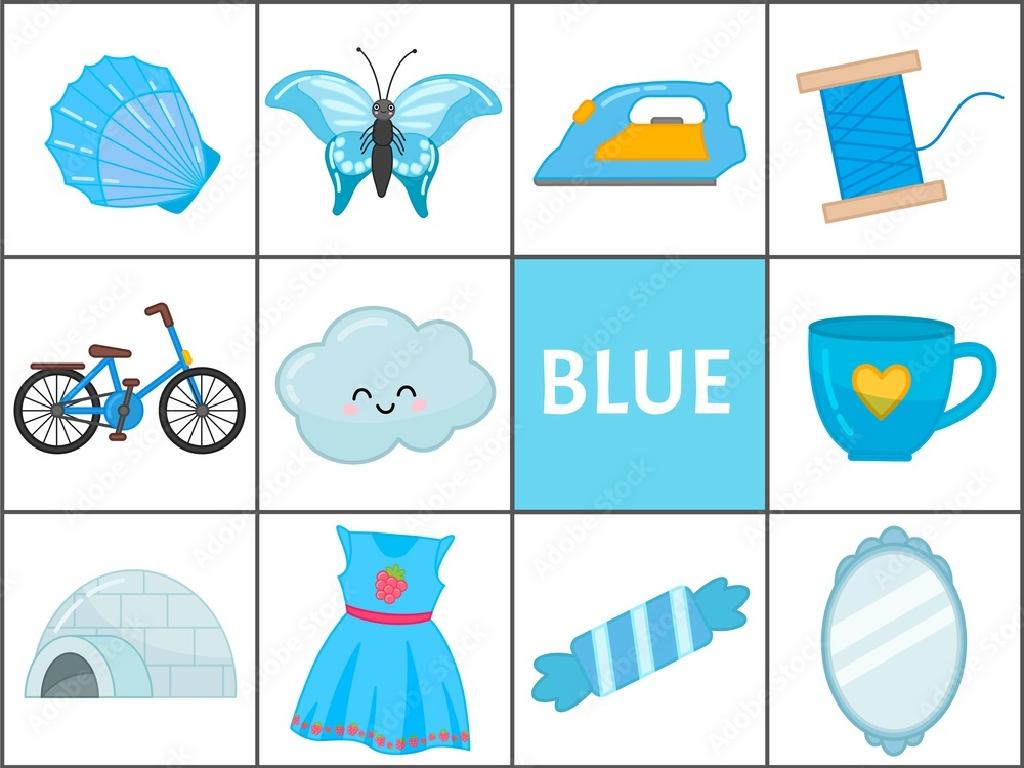Compare Mixed Numbers And Improper Fractions
Subject: Math
Grade: Seventh grade
Topic: Fractions
Please LOG IN to download the presentation. Access is available to registered users only.
View More Content
Comparing Mixed Numbers and Improper Fractions
– Recap: What are fractions?
– Fractions represent parts of a whole
– Today’s focus: Mixed vs. Improper
– Mixed numbers have a whole part and a fraction part; improper fractions have a numerator larger than the denominator
– Learning objective: Identify & compare
– Understand how to determine which is larger or if they are equal
– Key skill: Converting for comparison
|
Begin with a brief review of fractions to ensure students have a solid foundation. Today, we’ll focus on understanding the difference between mixed numbers and improper fractions. The learning objective is for students to be able to identify these types of fractions and compare them effectively. A critical skill they will learn is how to convert between mixed numbers and improper fractions to make comparison easier. Use examples like 1 3/4 (a mixed number) and 7/4 (an improper fraction) to illustrate that they represent the same quantity but are expressed differently. Encourage students to practice converting and comparing with various examples.
Understanding Mixed Numbers
– Define mixed numbers
– A whole number combined with a fraction, e.g., 2 1/3
– Real-life examples of mixed numbers
– Time: 1 1/2 hours, Cooking: 2 3/4 cups of flour
– Identifying mixed numbers
– Look for a whole number alongside a fraction
– Converting to improper fractions
|
This slide introduces the concept of mixed numbers, which are used when a quantity exceeds one whole but is not enough to form another whole. They consist of a whole number and a proper fraction. Provide everyday examples where mixed numbers are used, such as in cooking or telling time, to make the concept relatable. Explain how to spot a mixed number by identifying the presence of both a whole number and a fraction. Emphasize that mixed numbers can also be expressed as improper fractions, which is a skill they will practice. Encourage students to think of other examples and to practice converting between mixed numbers and improper fractions.
Understanding Improper Fractions
– Definition of improper fractions
– Fractions where the numerator is larger than the denominator.
– Examples of improper fractions
– For instance, 7/4 and 9/2 are improper fractions.
– Numerator exceeds denominator
– It indicates the fraction is greater than one whole.
– Significance of larger numerators
|
This slide introduces improper fractions, a key concept when comparing different types of fractions. An improper fraction has a numerator (top number) that is larger than its denominator (bottom number), which means it represents a value greater than one whole unit. Examples like 7/4 and 9/2 help illustrate this point. It’s crucial for students to understand that the larger numerator signifies a quantity exceeding one whole, which is why it’s ‘improper’ as it doesn’t fit into the traditional definition of a fraction being part of a whole. Encourage students to think of improper fractions as a combination of wholes and parts, which can also be expressed as mixed numbers.
Converting Mixed Numbers to Improper Fractions
– Steps for conversion
– Multiply the whole number by the denominator, add the numerator.
– Example: Convert 2 3/4
– 2 * 4 + 3 = 11/4
– Practice: Convert 1 5/8
– Try converting 1 5/8 on your own using the steps.
|
This slide is aimed at teaching students the process of converting mixed numbers to improper fractions. Start by explaining the steps: multiply the whole number by the denominator and then add the numerator to get the new numerator, placing it over the original denominator. Use the example of 2 3/4 to illustrate the process, showing that 2 times 4 plus 3 equals 11, resulting in 11/4. Then, present the practice problem of 1 5/8 and encourage students to apply the steps independently. Walk around the classroom to assist and ensure understanding. This exercise reinforces their skills in manipulating numbers and understanding the relationship between mixed numbers and improper fractions.
Converting Improper Fractions to Mixed Numbers
– Steps to convert improper fractions
– Divide the numerator by the denominator
– Example: Convert 9/4 to a mixed number
– 9 divided by 4 equals 2 with a remainder of 1. So, 9/4 = 2 1/4
– Practice problem: Convert 11/3
– Use the steps to try converting 11/3 on your own
– Understanding the conversion process
|
This slide is aimed at teaching students the process of converting improper fractions to mixed numbers. Start by explaining the steps: divide the numerator by the denominator, the quotient becomes the whole number, and the remainder over the original denominator becomes the fraction part. Use 9/4 as an example to show this process in action. Then, provide a practice problem, 11/3, for students to apply what they’ve learned. Emphasize the importance of understanding the conversion process rather than just memorizing steps, as this foundational skill will be useful in more complex math problems.
Comparing Mixed Numbers and Improper Fractions
– Converting for comparison
– Change mixed numbers to improper fractions or vice versa for easy comparison.
– Visualizing on number lines
– Number lines help to see which number is larger or if they are equal.
– Example: 3 1/2 vs 7/2
– Convert 3 1/2 to 7/2, then compare positions on a number line.
– Determining greater value
– Use the converted forms to see which fraction represents a larger amount.
|
To compare mixed numbers and improper fractions, students should first convert mixed numbers to improper fractions or vice versa. This standardizes the format and simplifies comparison. Using a number line allows students to visualize the size of different numbers. For example, converting 3 1/2 to an improper fraction gives us 7/2, which shows they are equal. Encourage students to practice this method with various examples, reinforcing the concept that the value of a number is not changed by its form. This slide will help students understand that different representations can reflect the same quantity and how to determine which is greater when they differ.
Class Activity: Fraction Scavenger Hunt
– Find mixed numbers in the classroom
– Spot improper fractions around you
– Convert and compare with a partner
– How do your examples relate? Discuss.
– Share findings with the class
– Present your most interesting find.
|
This interactive activity is designed to help students recognize and understand mixed numbers and improper fractions in a fun and engaging way. Students will search the classroom for real-world examples of these fractions, which could be on posters, in textbooks, or written by the teacher on the board. After collecting examples, they will pair up to convert and compare their findings, discussing the similarities and differences. This will help them to solidify their understanding of the relationship between mixed numbers and improper fractions. Finally, they will share their results with the class, fostering a collaborative learning environment. As a teacher, be prepared with additional examples and guide the students through the conversion process if needed. Encourage them to explain their reasoning during the sharing session.
Wrapping Up: Mixed Numbers & Improper Fractions
– Recap of key concepts
– Homework: Conversion worksheet
– Convert between mixed numbers and improper fractions.
– Next class: Add & subtract fractions
– We’ll explore addition and subtraction of fractions.
– Practice makes perfect!
|
As we conclude today’s lesson, it’s important to review the key concepts we’ve covered about comparing mixed numbers and improper fractions. For homework, students are assigned a worksheet that will reinforce their skills in converting between the two types of fractions. This practice is crucial for their understanding and will prepare them for the next lesson, which will involve adding and subtracting fractions. Encourage students to practice these conversions as it will aid in their fluency with fractions. The next class will build on this knowledge, so it’s important for students to be comfortable with these concepts.






